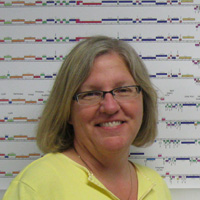Welcome to the forums at seaphages.org. Please feel free to ask any questions related to the SEA-PHAGES program. Any logged-in user may post new topics and reply to existing topics. If you'd like to see a new forum created, please contact us using our form or email us at info@seaphages.org.
Recent Activity
All posts created by debbie
| Link to this post | posted 02 Mar, 2023 17:42 | |
|---|---|
|
|
Thanks Chris. |
Posted in: Functional Annotation → Deep TMHMM?
| Link to this post | posted 27 Feb, 2023 19:20 | |
|---|---|
|
|
Hi Amy, We took Muf-like calls off of the official function list because it appears to not be a structural call and while is appears everywhere, we don't see a good indication of what it is doing. Please do not call it. Best, debbie |
Posted in: Cluster AK Annotation Tips → Portal and MuF-like
| Link to this post | posted 23 Feb, 2023 01:14 | |
|---|---|
|
|
Hi Allison, Minor tail proteins are the most common functional assignments that are acceptable to call with no CDD or HHPred supporting data. The genes that are "eligible" are the 4-6 large genes downstream of tape measure. I would not make the assignment if the gene is not a relatively big gene. In the case of Kyle's question, there is discrepant data that contradicts a minor tail protein call - synteny and HHPred hits. Best, debbie |
Posted in: Functional Annotation → RefSeq and INSDC name disagreements in NCBI Blast for Functonal Assignment
| Link to this post | posted 17 Feb, 2023 20:24 | |
|---|---|
|
|
Hi Kyle, Well, this is quite messed up, isn't it. I will investigate further. in the meantime, I would like to provide what I think of BLASTp functions calls at NCBI, i don't value them very much - not without supporting evidence. So if you continue to investigate, there is no supporting data for a minor tail protein except NCBI said so. there is no way that a functional call can be made from the blast data that HHPred data sources does not support. (HHPred does a Psi blast, so it is finding more distant relationships to a protein than a single blast could.) Looks like this is a terminase, small subunit to me. debbie |
Posted in: Functional Annotation → RefSeq and INSDC name disagreements in NCBI Blast for Functonal Assignment
| Link to this post | posted 13 Feb, 2023 13:45 | |
|---|---|
|
|
Amanda, This answer is all about context. I don't know the answer with the information provided. Look at the whole genome. What makes sense? Now that we know that N terminal hits can be signal proteins, i think where in the gene the membrane protein is found impacts my thinking. Just because we moved to Deep THHMM doesn't mean you can't use other tools to continue your evaluation. In general, keep it simple. Membrane proteins are not functions. And when Phamerator gets this in place, the data is not lost. debbie |
Posted in: Annotation → Membrane proteins
| Link to this post | posted 12 Feb, 2023 23:19 | |
|---|---|
|
|
Rick, For now, I would call the big overlap, which I assume is the way that Survivors was called. Let's continue to consider the Guiding Principles as guidelines. debbie |
Posted in: Cluster CT Annotations Tips → BIG GENE OVERLAP
| Link to this post | posted 08 Feb, 2023 03:15 | |
|---|---|
|
|
Amanda, I vote for not calling any TACs. debbie |
Posted in: Cluster B Annotation Tips → Tail assembly chaperones?
| Link to this post | posted 03 Feb, 2023 20:19 | |
|---|---|
|
|
From HHPred, this gene hits HK97_gp10, a minor capsid protein and a tail protein. So one must ask which is it? HK97 is the prototype phage for understanding how the capsid is formed. The lab that studied it was the lab of Roger Hendrix, from the University of Pittsburgh. As we hit gp10 of HK97, I asked if they knew the function of that gene and they could not identify it in their studies. As per the Approved Function List, when you hit HK97_gp10, stick with Hypothetical Protein until someone finds more data to support a call. |
Posted in: Cluster EJ Annotation Tips → Potential minor capsid protein
| Link to this post | posted 02 Feb, 2023 00:09 | |
|---|---|
|
|
My advice is to ask the IT administrator to set the preferences. Whatever they do, should stick. debbie |
Posted in: DNA Master → DNA Master errors
| Link to this post | posted 29 Jan, 2023 21:50 | |
|---|---|
|
|
Hi Robert, Please check you DNA master preferences and make sure you follow #2 and #6 correctly. https://seaphagesbioinformatics.helpdocsonline.com/article-66 |
Posted in: DNA Master → Glimmer failure during autoannotation

